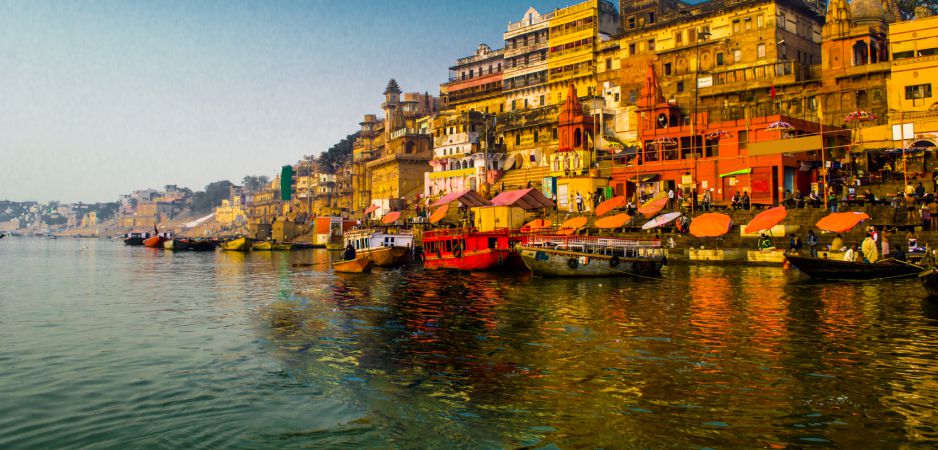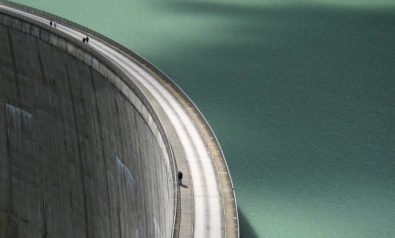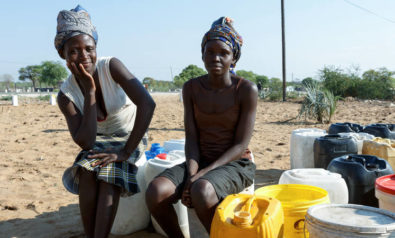The holy river washing Indians from their sins is itself in dire need of being cleansed from the sins of the people to whom it gives life.
The Ganges, India’s river of life, is in imminent danger. One-tenth of the world’s population relies heavily on the Ganges and its tributaries. Yet the river has become one of the most polluted on the planet, denying hundreds of millions access to clean water and robbing the world of its once sublime beauty.
With the recent boom of e-commerce in India, online retail giants like Flipkart, Amazon and Snapdeal are setting down roots in modern Indian society. Everything from basic needs like food and clothing to fancy items such as electronic gadgets and gold jewelry is now available online. A Canadian company is even looking forward to selling “fresh” air.
Now Ravi Shankar Prasad, minister for communications, is planning to deliver the supposedly sacred water of the Ganges—or what Indians call Ganga Jal—to people’s doorsteps. In an age of American consumerism, even the water of the Ganges will be available at a click of a mouse.
The Ganges
The importance of the Ganges to Indian culture cannot be overstated. Almost all Hindu ceremonies across the Indian subcontinent involve the sprinkling of Ganges water. In fact, Hindus consider all rivers holy just as they venerate the cow. But the Ganges is considered the holiest of all rivers.
The Ganges originates in the icy summits of Himalayas, also known as Devbhumi, which simply means the land of the gods. As per ancient myth, a sage had to perform years of penance for the river to descend from the heavens to provide life to the land.
Located on the banks of the Ganges is the holy city of Varanasi. Mark Twain described the city as “older than history, older than tradition, older even than legend, and looks twice as old as all of them put together.” Hundreds of millions come to the city from all over the country to pray, bathe and to celebrate their divine river goddess. Millions also come here to cremate their dead. Many Hindus believe that by burning the corpse of their loved ones, they liberate their souls from the perpetual cycle of rebirth, enabling them to attain moksha, which is Sanskrit for liberation.
Every year, up to 30,000 bodies are cremated on the legendary ghats in Varanasi, the riverfront steps leading to the Ganges. Tourists have long found this spectacle haunting and mesmerizing. For Hindus, cremation by the Ganges is a way of life. Yet cremation on the ghats is now beyond the reach of ordinary people. It has become far too expensive and many families simply dump dead bodies directly into the Ganges instead of cremating them.
Pollution in the Ganges
The Ganges is now a toxic river. Its levels of pollution are terrifying. It is not only dead bodies and the ashes of burnt bodies that pollute the river, but also industrial effluents and untreated urban sewage.
Hundreds of industries on the Ganges release their waste directly into the river. This discharge of effluents has more than doubled in the last 20 years, and experts predict another 100% increase in the following 20 years. The Central Pollution Control Board (CPCB) classifies a mere 764 industries as “grossly polluting industries,” but provides few details or analysis of the level of devastation and does precious little to tackle this problem.
Kanpur, the center of India’s leather industry, is on the banks of the Ganges and lies upstream from Varanasi. For decades, tanneries in Kanpur have released large amounts of toxins into the river, making its water unfit for humans.
In fact, the evidence for the pollution of the Ganges is frighteningly stark. During India’s hot and dry summers, the pollution of the Ganges increases as water recedes and tanneries boost production. In 2013, the government had to shut the tanneries temporarily for the Kumbh Mela, the biggest human religious congregation that occurs on the banks of the Ganges.
State Response
Government action to clean up the Ganges is not the norm though. In fact, both the central government in New Delhi and the governments of states through which the Ganges runs have been corrupt and incompetent in dealing with the pollution of India’s supposedly holy river. The measures governments take are often muddled, cosmetic and even bizarre. For instance, the government once released 25,000 flesh eating turtles into the Ganges in the hope that they would devour the dead bodies dumped into the river. Corruption and mismanagement ensured that the plan was a monumental failure.
India’s infamous babus, the deservedly pejorative term for the country’s bureaucrats, have stolen millions in the name of cleaning the Ganges. Tragically, they have lacked both will and skills to deal with the gargantuan problem of an increasingly toxic river that has been the lifeblood of Indian civilization.
Meanwhile, the rapid explosion of India’s population is putting great strain on rivers and water resources. Increasing use of groundwater has resulted in water levels in the Ganges-Brahmaputra Basin falling annually by 15-20 millimeters. Even as water is decreasing, pollution is rising as over a billion people consume more stuff and throw the waste directly into rivers.
The amount of toxins, chemicals and other dangerous bacteria found in the river are now almost 3,000 times over the limit that the World Health Organization deems as safe. The Yamuna, the main tributary of the Ganges, is now the most polluted river in India. Delhi, India’s national capital, lies on the Yamuna, and this megalopolis dumps 60% of its untreated sewage into the river. Coliform bacteria, heavy metal, nitrogen and other pollutants have killed the river. Yamuna’s toxic waters join the Ganges at Allahabad to further contaminate India’s holiest river.
 Fair Observer provides you deep and diverse insights for free. Remember that we still have to pay for servers, website maintenance and much more. So, donate now to keep us free, fair and independent.
Fair Observer provides you deep and diverse insights for free. Remember that we still have to pay for servers, website maintenance and much more. So, donate now to keep us free, fair and independent.
For years, Indian politicians have been making slogans and announcing programs to clean the Ganges. Prime Minister Narendra Modi left his home state of Gujarat to contest from Varanasi, India’s holiest city, to project himself as a national figure instead of a regional one. He declared grandiloquently, “Mujhe Maa Ganga ne bulaya hai,” which literally translates as “Mother Ganga has summoned me.”
To his credit, the Modi government approved a five-year, $3 billion budget for Modi’s pet project called the Namami Gange Program. Yet it is doubtful this program will work. It has taken two years for the prime minister to come up with the initiative, but details about how it would work are still fuzzy. Opposition parties rule the states through with the Ganges flows, and it is unclear who is to do what to clean up the mess.
The Ganges is still toxic and Varanasi continues to be dirty. India’s babus continue to be in-charge of everything from educating the masses to cleaning the rivers. Under Modi, some argue that they have grown in power. Their track record does not inspire confidence though. Tellingly, India’s Supreme Court has delivered a stinging rebuke to the babus, damning their shambolic efforts and remarking that the steps they have taken will not clean the country’s holiest river even after 200 years.
It is a grim irony that Indians who worship the Mother Ganges are killing the river they revere. Yet even now, the problem of pollution in India’s rivers can be solved. Indians have to snap out of apathy and ignorance. They must accord the same importance to the cleaning of the Ganges as they do to attending the Kumbh. The first step in solving any problem is recognizing it. It is high time that Indians come to the realization that the Ganges is far too toxic to be holy anymore.
The views expressed in this article are the author’s own and do not necessarily reflect Fair Observer’s editorial policy.
Photo Credit: Shylendra Hoode
Support Fair Observer
We rely on your support for our independence, diversity and quality.
For more than 10 years, Fair Observer has been free, fair and independent. No billionaire owns us, no advertisers control us. We are a reader-supported nonprofit. Unlike many other publications, we keep our content free for readers regardless of where they live or whether they can afford to pay. We have no paywalls and no ads.
In the post-truth era of fake news, echo chambers and filter bubbles, we publish a plurality of perspectives from around the world. Anyone can publish with us, but everyone goes through a rigorous editorial process. So, you get fact-checked, well-reasoned content instead of noise.
We publish 2,500+ voices from 90+ countries. We also conduct education and training programs
on subjects ranging from digital media and journalism to writing and critical thinking. This
doesn’t come cheap. Servers, editors, trainers and web developers cost
money.
Please consider supporting us on a regular basis as a recurring donor or a
sustaining member.
Will you support FO’s journalism?
We rely on your support for our independence, diversity and quality.


















